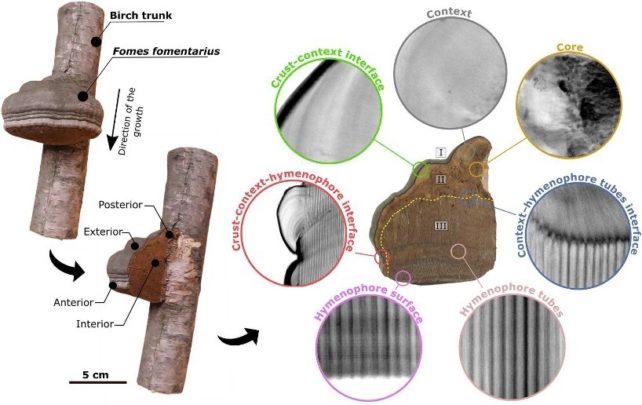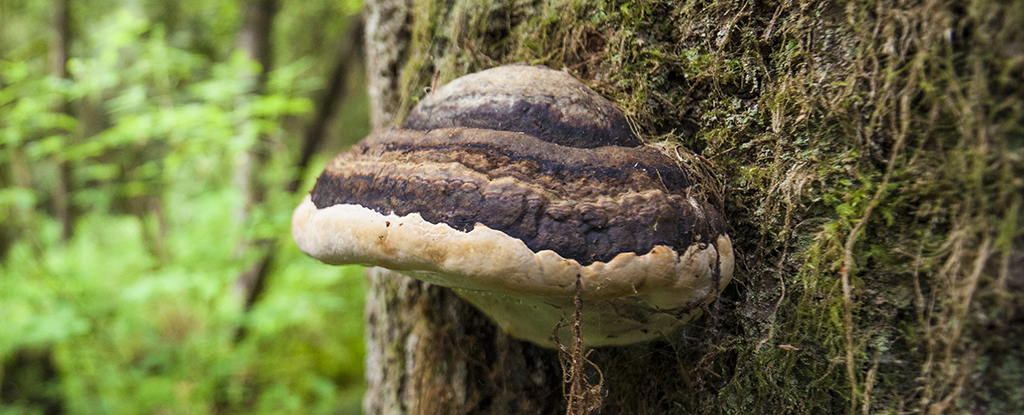Products You May Like
The tinder fungus (Fomes fomentarius) has some surprising properties, scientists have discovered: properties that could enable it to provide a natural, biodegradable alternative to certain plastics and other materials in the future.
As its name suggests, the wood-eating fungus has historically been used to catch a spark for fires, though it has also been incorporated into clothing and used for medicine.
Now it could have a whole new level of usefulness as a biodegradable alternative to plastics, thanks to the way F. fomentarius mycelium is put together.
Made up of thin filaments known as hyphae, mycelium form root-like networks that spread through soil or rotting material. In the case of tinder fungus, this network can be split into three distinct layers, says the team from research institutions in Finland, the Netherlands, and Germany.
“Mycelium is the primary component in all layers,” the researchers write in their published paper. “However, in each layer, mycelium exhibits a very distinct microstructure with unique preferential orientation, aspect ratio, density, and branch length.”
The researchers looked at the structural and chemical composition of the fruiting body of F. fomentarius, using samples collected in Finland. Mechanical strength tests were combined with detailed scans of the fungus to examine its characteristics in detail, revealing three layers: a hard, thin outer crust encasing a foamy layer underneath and stacks of hollow tubular structures at the core.

Parts of the fungus were as strong as plywood, pine, or leather, the team reports – while also being more lightweight than those materials. It’s a combination that isn’t usually associated with the fleshy part of a fungus like this.
The researchers found the hollow tubes, which make up the bulk of F. fomentarius fruiting bodies, can resist greater forces than the foamy layer, all without undergoing major dislocations or deformations.
However, it’s perhaps not all that surprising: this fungus has to be built to withstand the rigors of the changing seasons as well as tree branches falling down from above. That’s the sort of toughness that can inspire new synthetic materials.
Usually, stronger, stiffer or materials are also heavier and more dense – but not in this case.
“What is found to be extraordinary is that, with minimal changes in their cell morphology and extracellular polymeric composition, they formulate diverse materials with distinct physiochemical performances that surpass most natural and human-made materials that are usually confronted by property trade-offs,” write the researchers.
“We believe that the findings should attract a broad materials science audience and beyond.”
The F. fomentarius fungus already plays a key role in nature in the way that it clings to dead trees and releases important nutrients that would otherwise remain in the bark. Now, it could be even more useful in the field of materials science.
Exactly how and where this fungus could be used needs to be determined, but understanding its layers is an important step: we now know how it’s constructed on the cellular level.
It’s part of a growing body of research into the potential of living materials, using living cells in a controlled and programmed way to achieve certain end results – which in this case would be particular kinds of materials.
“These results could offer a great source of inspiration for producing multifunctional materials with superior properties for diverse medical and industrial applications in the future,” write the researchers.
The research has been published in Science Advances.
